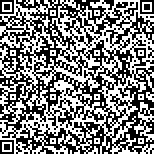下载中心
优秀审稿专家
优秀论文
相关链接
摘要

航空激光雷达是最近十几年开发的最新测量技术.利用激光扫描器所获得的高度数据可以建立精密的地形模型,同时可以获得森林生产力的信息.无论是地形测量还是植被估算,在数据处理时都需要将来自地表和植被的信号分离开,即滤波.数据滤波的方法很多,但是都不成熟,而且处于技术保密状态.本文介绍目前主要的信号分类方法,并开发了动态阈值分离法.该方法以森林为解析对象,通过反复运算逐渐逼近,完成地表和植被的分离,从而实现了地形与森林测量的双重目的.通过引入地形因子把原地形转换为理想平地,大大减少了过度滤波或者滤波不充分的情况.本方法基本实现自动处理,容易操作.利用本方法计算的高度误差(均方差,RMS)为0.4-0.5m.本方法还适用于城市地区高程模型的建立.
关键词:
地形测量 滤波 激光扫描器 数字高程模型 森林测量 信号分类 航空 激光雷达 森林 测量 数据 处理方法 研究 Forest Altimetry Data Laser Airborne 高程模型 地区 城市 均方差 高度误差 计算 操作 自动Airborne laser scanning foraltmi etry is a new technology, which hasbeen developed during last two decades.To derive topography from laser scanned data, off-ground elements like forest and buildings, which are treated as noise,need to be filtered out. This paper, in addition to the review of recent studies on derivation of topography from laser scanned data, is intended to develop a new algorithm by using average filter for forestareas. By iterative calculation, the surface approached the ground progressively by cutting off convexes above the reference surface. In particular, by introducing topographic factor to transform the surfacemodel to a presumed flat terrain, over filtering or less filteringwas significantly reduced. The accuracy(RMS) of the derived DTM was 0·4—0·5m.Datawas acquired by Laser Bird, which is a laser radar system produced by Optech Ltd. A digital surface model(DSM) was created with all original data, from which the terrain modelwas constructed by extracting signals reflected from the ground. The basic procedure is as follows:(1) Creating surface mode.l W ith all random foot print data, Delaunay triangle was adopted to create a three-dmi ensional surfacemodel DSM0. (2) Displaying shaded relie.f The intermi-results were manually monitored with a shaded relief mi age to determine whether to continue or stop filtering. (3) Filtering. A smoothed surface model was created by average filter, which is called temporal surfacemodel (DSMt). Regardless the feature of topography, the size of filterwindowwas setstablewith 5m×5m. (4) Approaching the ground. By comparingDSMtwith a threshold, smaller valueswere selected forDSMtmodification, and the surface gradually came to the ground. (5) Reiterative computing.Above computationswere reiteratively operated, whichwere ended upwhen eitherof following conditionswasmet,i) the difference between DSMt and threshold reaches the specified value, or ii) reiteration reaches 150 tmi es. (6) Computing the reference surface. Complexity of topographywas taken into account. A reference surface model (DSMr), which is smi ilar to the real one in form, was introduced for computing. DSMrwas created by using the filterwith a largerwindow.Considering the relationship between DSM0and DSMr, the rough surfacewas transformed to a plain one (DSMp), which was then filtered, and the topographywas restored after calculation. (7) Classificating the data. W ith a thresholdΔH,signals from canopy or groundwere separated by comparingwith the originalLP data. PointswithLP-DSMt≤ΔHwere considered as ground, whichwere used forDTM construction. (8) Constructing terrainmode.l Footprintson groundwere extracted from the originalLP data to create digital terrainmode.l (9) Testing the accuracy. The elevationsof16 points in\nthe study areaweremanuallymeasured, whichwere used for accuracy evaluation.

